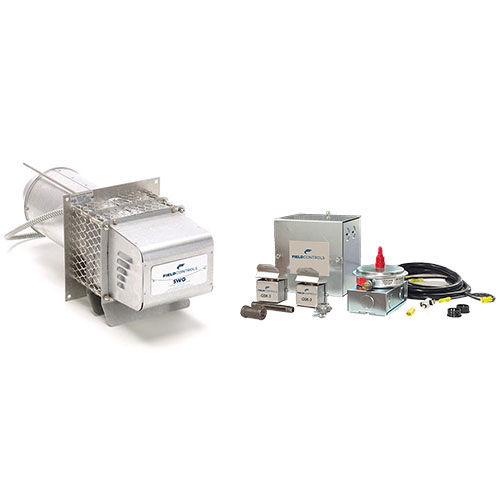Efficient and Safe Venting Solutions: Explore Our Range of Power Venting and Sidewall Venting Products for Gas and Oil Heating Appliances
Gas and oil heating appliances efficiently generate heat through the combustion of fuel. Properly venting heating appliances is important to the safety and health of the occupants. The heat is transferred through the heat exchanger and then distributed to the conditioned space. However, it is important to safely vent the byproducts of combustion outside the structure with a power venter
In a conventional chimney, venting is achieved by the natural lifting action of the hot combustion gas. New, efficient systems absorb more of the heat in the heat exchanger and produce lower temperature vent gas. As a consequence, the lower temperature gas may not rise as quickly or reliably as in older, less efficient systems.
To address this issue, power venting or sidewall venting has emerged as a more economical and safer alternative to chimney venting. By utilizing a motorized blower, a power venter effectively vents the products of combustion. It is designed to work in conjunction with the appliance, employing an interlock system that ensures proper draft is achieved before activating the appliance burner. Power venting or sidewall vent is more economical and safer than a chimney vent. A power venter uses a motorized blower to vent the products of combustion. A power venter is interlocked with the appliance to ensure that proper draft is achieved before the appliance burner is activated.
Learn more about our full line of venting products and our combustion blowers
What Options are Available for Power Venting?
Patented SWG or ComboVent Power Venters are ETL and cETL listed for all LP gas, natural gas, or oil-fired heating equipment. The SWG or ComboVent combines the motor, blower, and vent hood in one complete, easy to install unit. The SWG mounts on the outside of the building and pulls the combustion gases from the appliance through the outside wall utilizing 100% negative pressure.










